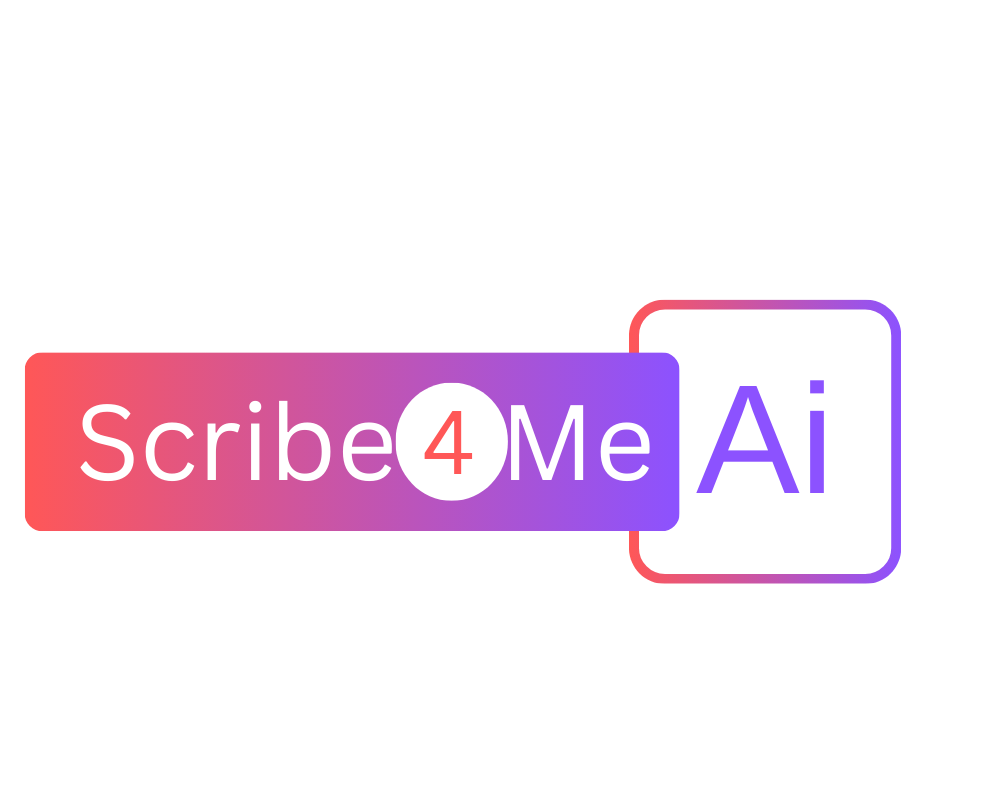

AI Medical Scribe – The Future Is Here!
As the healthcare industry evolves, the pressure to keep up with medical documentation often weighs heavily on providers. Did you know that physicians spend two to three hours a day on documenting tasks alone? That’s where technological innovations like AI medical scribes come into play, ready to transform the way care is documented. The AI medical scribe technology that uses machine learning to mimic scribe-like capabilities is designed to ease physician workload and save as much as three hours on daily documentation time. The future is here! Let’s discover how AI medical scribes can automate and streamline the documentation process, giving physicians more time to focus on direct patient care.
Medical Documentation – From Paper To AI
Clinical documentation has come a long way – from the traditional paper-based records to advanced AI systems. In the past, physicians relied on handwritten notes, which often made information hard to locate and prone to errors. While the rise of EHRs made it easier to manage and access patient information, they also introduced administrative burdens that took time away from patient care. Establishing a “personal connection” during consultations seemed compromised, as eye contact was often replaced by the rhythm of typing and clicking. The electronic record has inadvertently undermined “physician-patient relationship”, the core element of providing high-quality care. The AI scribe step in to automate the documentation process, while preserving the sanctity of physician-patient interactions.
The Basics Of AI Medical Scribe
AI scribe is a tool designed to automate the clinical documentation process and reduce the burdensome administrative workload. This is how it works. An AI medical scribe unobtrusively listens to the conversations between a physician and a patient that occur naturally during an encounter and automatically converts them into a clinical note. It is smart enough to filter only the clinically relevant information and create HIPAA-compliant notes ready to be posted into the EHRs. Let’s see some of the 5 top advantages of using AI scribes.
- Improved Efficiency: Efficiency is all about working smarter. AI medical scribes improve efficiency in healthcare settings by automating the process of note-taking and documentation. By significantly reducing the time spent on note-taking, it allows more time for direct patient care.
- Increased Accuracy: In healthcare, accuracy is paramount. The precision of AI in capturing and transcribing conversations significantly reduces human errors. This facilitates the creation of accurate and reliable patient records.
- Enhanced Patient Interaction: More time with patients leads to better care. By streamlining the documentation process, this technology allows physicians to focus entirely on patient consultations. This helps build stronger relationships and improve the quality of care.
- Reduced Burnout: Fighting burnout starts with lighter workloads. By significantly reducing the repetitive data entry tasks, AI scribes help decrease workload. This, in turn, lowers burnout and job dissatisfaction.
- Cost-effectiveness: Cost savings make AI scribes a smart choice for physicians. It offers a more affordable option compared to traditional human scribes, eliminating costs associated with hiring, training, and providing ongoing benefits.
Real-World Examples And Case Studies On The Successful Implementation Of AI Medical Scribes
Learn about the benefits of AI scribes with clear, real-world examples. Here are a few case studies that show how this technology has been making physicians’ lives easier and improving care quality.
A pilot study found that AI scribes significantly reduced documentation time and improved physicians' and patient experiences in dermatology practices.
A California-based pilot study found that primary care physicians using AI scribes documented less during visits and decreased their after-hours electronic medical record usage.
A digital scribe system used in a fast-paced ED setting to summarize clinical conversations was found to reduce the clinical documentation burden imposed on busy physicians.
A study from South Shore Family Practice, Michigan, revealed that an AI-powered scribe can reduce the time required for acute patient visits by half. This reduction not only contributed to a better work-life balance for providers, but also improved practice efficiency and quality of patient care.
The Future of AI Scribes in Healthcare
As we look ahead, AI scribes are fast becoming indispensible tools making them invaluable in a variety of clinical settings. We expect these tools to be widely adopted across healthcare systems, driven by positive physician experiences and a clear return on investment. With improvements in AI and machine learning, AI scribes are likely to develop better language skills, work seamlessly with EHRs, and even help with clinical decision-making. Moreover, AI is likely to incorporate multi-modal inputs, such as images and diagnostic data, which will expand it capabilities beyond just traditional text documentation.
The Scribe4Me.AI Promise – Making Healthcare Human Again
Scribe4Me Ai medical scribe isn’t just about the technological innovation. It’s much more! It’s about making healthcare better for both the providers and the patients. We promise to help physicians re-embrace the joy and meaning in medicine and reignite a sense of fulfilment. Physicians choose medicine because they love taking care of patients. We want them to do what they love doing the most. That’s where they find joy - the pure joy of caring and curing, without having to deal with repetitive data entry tasks. For patients, we promise the care you need and the undivided attention you truly deserve. Scribe4Me Ai meticulously documents every detail without detracting from patient care that lies at the heart of human healing. At the end of the visit you will leave feeling heard, valued, and your needs met.
Discover how Scribe4Me Ai can improve efficiency and make healthcare human again —schedule a demo today!


